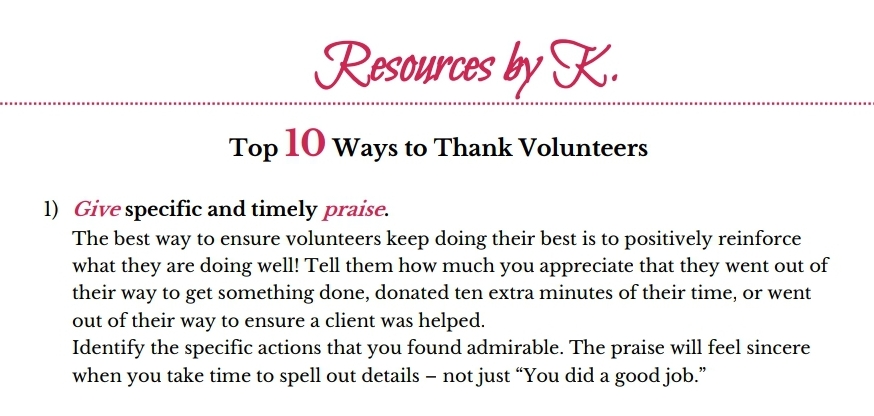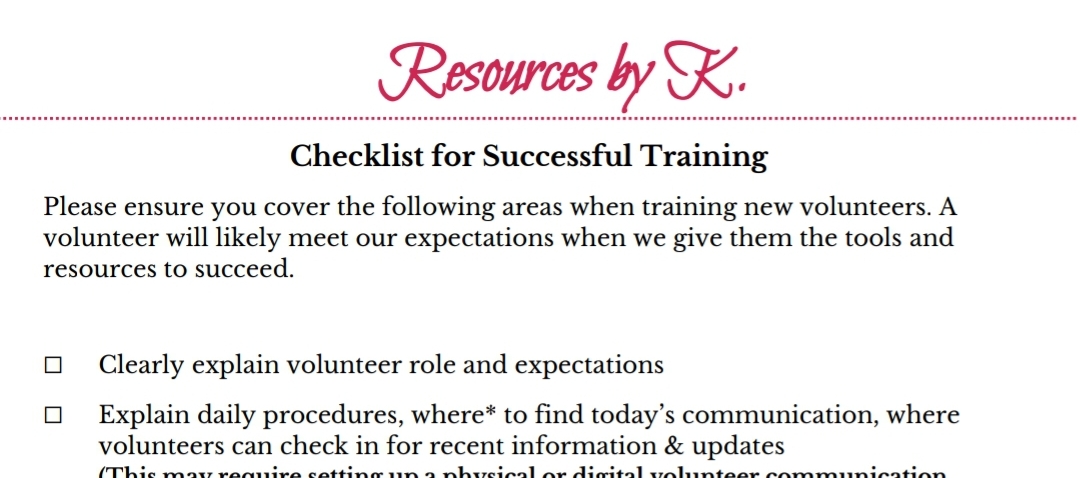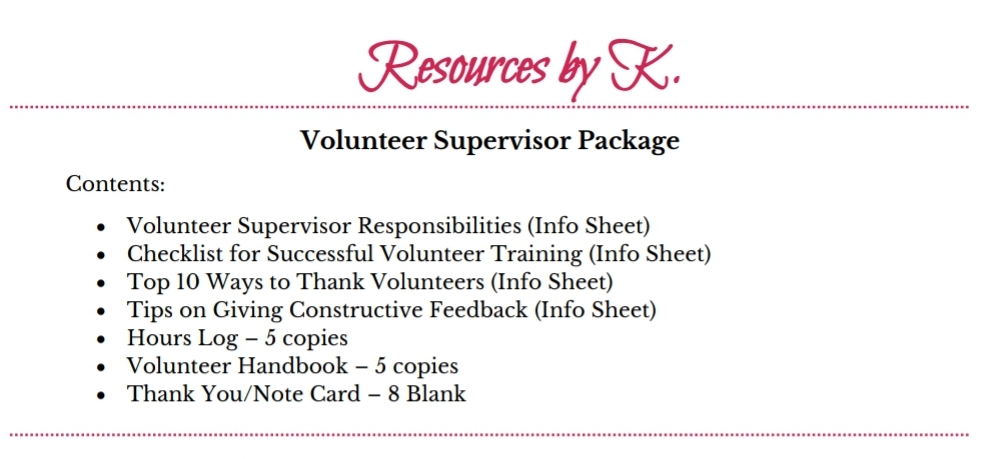In this week’s resource, I have provided my top ten ways to thank volunteers. It can be applied or adapted to any organization. These are basic principles or suggestions that I have gathered from innumerous other resources and years of experience in the field. It is by no means extensive, but it’s concise and explains the result of each action.
Because I enjoy working within a framework of appreciation, it’s usually where I start when looking to improve workplace culture. If employees, staff, volunteers, humans feel appreciated and valued for the work they do, they do more of it and with better quality. They are generally happier and enjoy improving their place of work.
This approach works if you are looking to build, grow, and enhance your business or non profit sustainably. Sustainability means less turnover and more natural support from your stakeholders. It should be your goal to grow, even if slow and steady. It should not be your goal to remain status quo or stagnant as this results in burnout and die off.
If you want a simple guide to demonstrate to your volunteer supervisors how they can easily improve volunteer relations, download the PDF here and see below for a summary.
How to Thank Volunteers:
- Give specific and timely praise.
- Say “Thank You.”
- Give them the big picture.
- Take interest in your volunteers.
- Nominate your outstanding volunteers.
- Give gifts or tokens of appreciation.
- Share your volunteers’ success or use their work as an example.
- Ask for your volunteers’ expertise.
- Check in with your volunteers.
- Prove more opportunity.
Recently I had a conversation with a staff in a supervisory position. I asked who their favourite employee to work with in a particular situation was. She responded, “I don’t have favourites. I like the work that some people do better, but I don’t want to make others feel bad.”
I asked why she didn’t elevate that person, recognize them, and inspire the rest of the staff to work the same. She responded “That doesn’t happen here.” How sad! When this type of attitude is held by management, employees quickly recognize that doing better work offers little extra in return. You help your staff train in apathy.
If you need inspiration in your workplace, contact me. I work with managers and supervisors to help them better coach and manage their staff. It’s as simple (and challenging) as changing the way you provide feedback to your employees. It may require changing your delivery style or implementing new policies in the workplace. It may require shifting your attitude from pessimism to optimism.
Typically, the change you want to see in your staff is one that supervisors and management must make first. I can help you identify your core challenges and create simple yet effective solutions. Whether you need to learn how to foster a culture of appreciation or deliver harsh criticism in a motivating manner. You’re not alone in your challenges, and there is affordable help.
Be the positive change in your workplace. Foster a better a culture. See different results.






